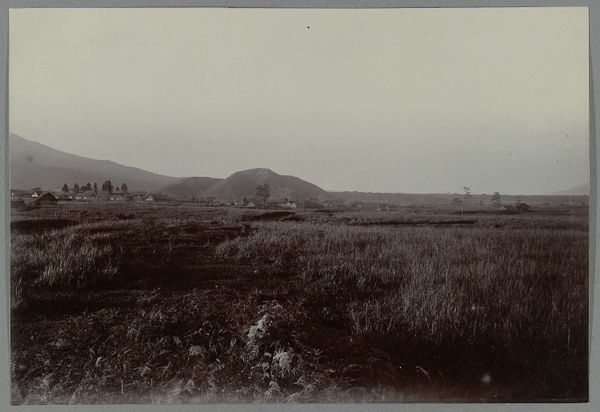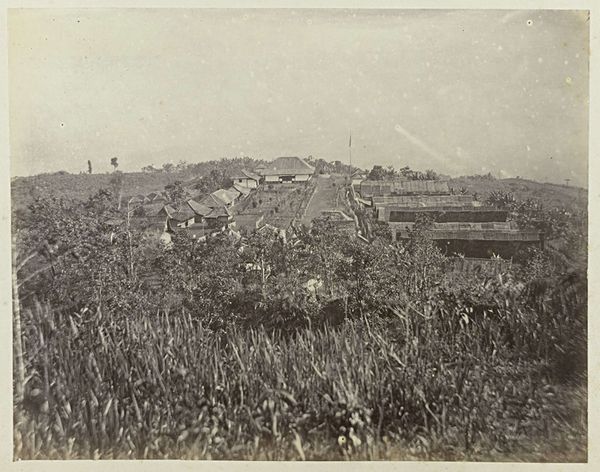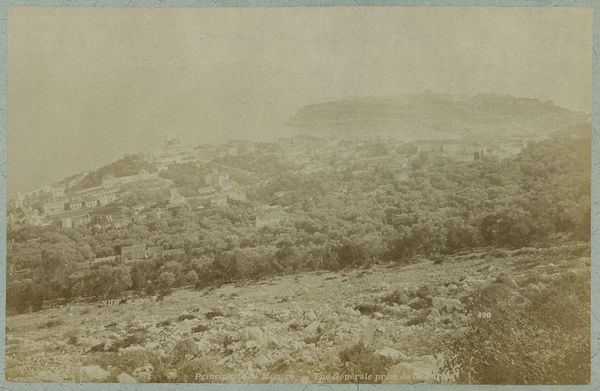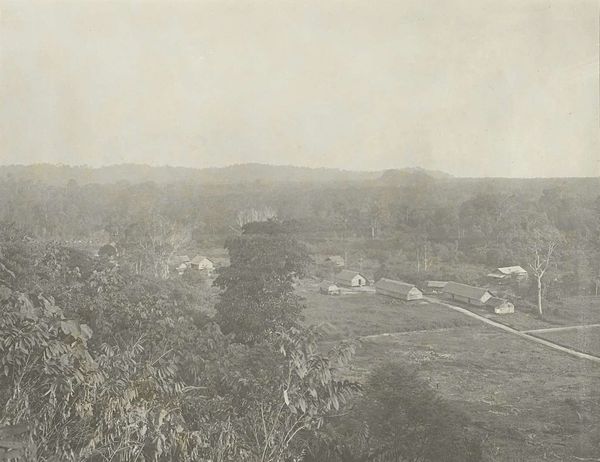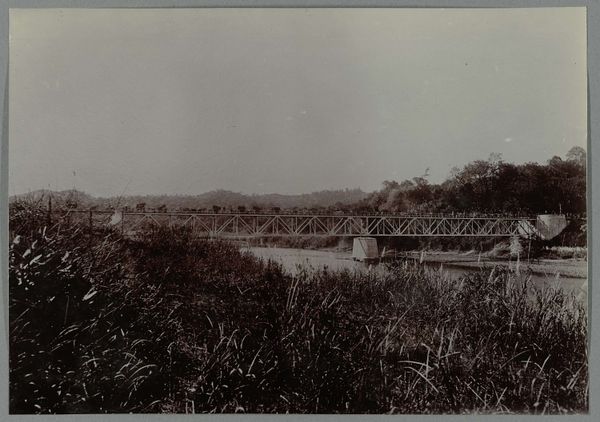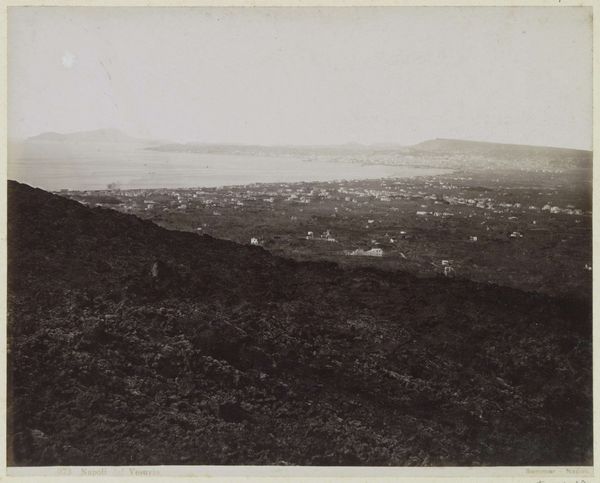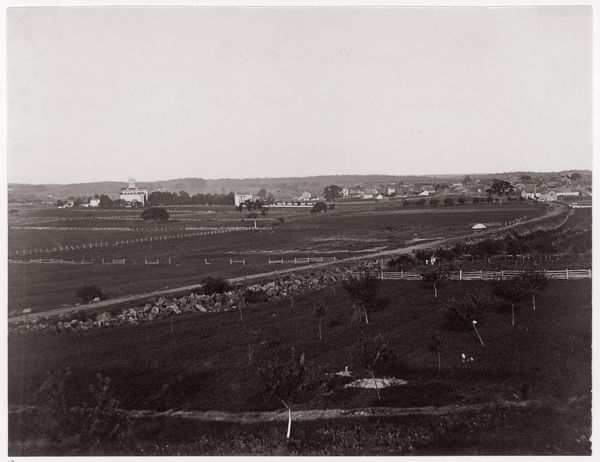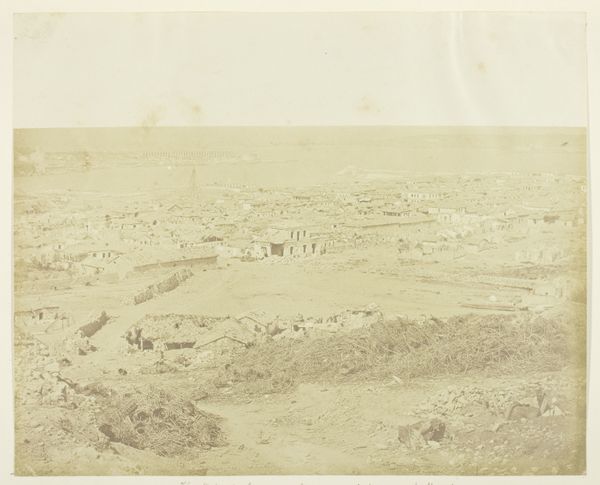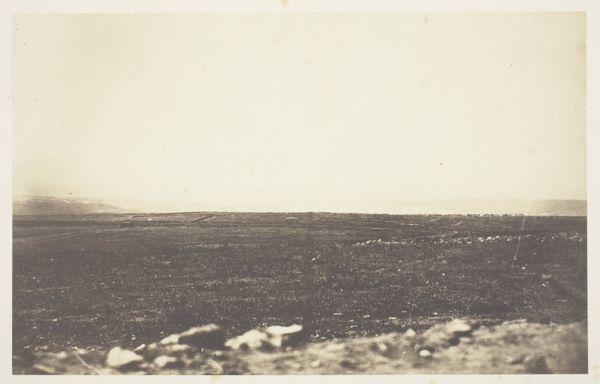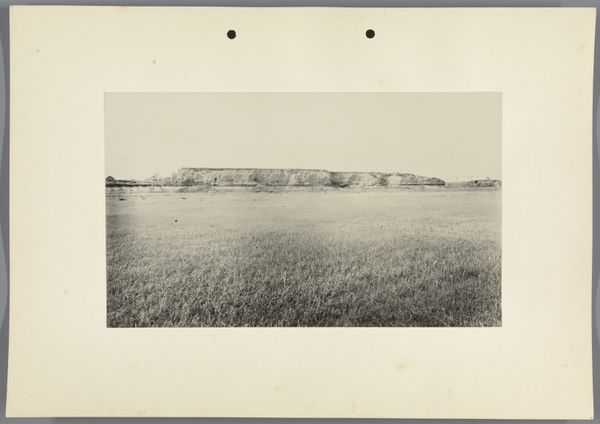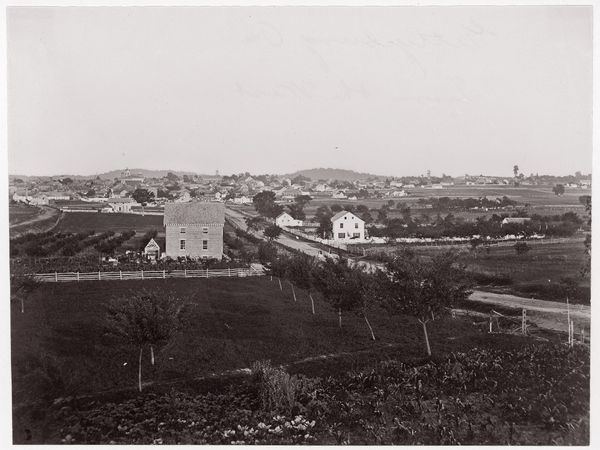
photography
#
landscape
#
photography
Dimensions: height 138 mm, width 200 mm
Copyright: Rijks Museum: Open Domain
Editor: Here we have "Bivak Lampahan," a photograph, likely a silver gelatin print, dating from between 1903 and 1913. The eye is immediately drawn to the ordered structures contrasting against the natural landscape, giving the sense of something temporary imposed on nature. How would you interpret this piece, looking at its materials and creation? Curator: For me, the materiality of this photograph – the specific chemical processes used to fix this image onto paper – speaks volumes. The stark contrast hints at the chemical interventions necessary to create the print. It speaks of a moment captured, an archive produced through labor-intensive practices that would later be commodified as documentation, knowledge, even entertainment. Do you notice the tent-like structures? Editor: Yes, there seems to be a camp or settlement visible in the center of the frame. What does their construction suggest to you? Curator: Consider the labor involved in constructing that camp. The materials available, the modes of transportation… these structures become records of the social and economic conditions of their making. Photography allows us to examine not only the 'what' but also the 'how' and 'why' of its production, from the exploitation of labor involved in gathering materials for those tents, to the production and distribution of the photograph itself. Who had access to it and what role was it supposed to play in colonialist narratives, do you think? Editor: That's interesting – thinking about the image as a record of so much more than just what’s immediately visible. The way you discuss the hidden labour that shaped both the photograph and the scene within provides new layers for me to consider. Curator: Exactly. By centering our focus on materiality, we acknowledge that artworks aren't just aesthetic objects, but complex records embedded with social and political significance. Every component speaks, right? From its chemicals to how this photo would have traveled, its consumption… Editor: It definitely changes how I approach landscape photography. I usually focus on aesthetic appeal but it helps understanding how economic activity shapes an artwork like this, right down to the grain of the photograph itself.
Comments
No comments
Be the first to comment and join the conversation on the ultimate creative platform.
